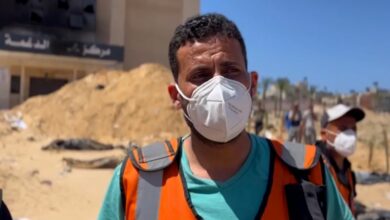With only five years remaining in which to reach the Millennium Development Goals (MDGs), UN secretary-general Ban Ki-moon has called world leaders to a summit in New York from 20-22 September 2010.
The sixth MDG calls for a halt to and a beginning of the reversal of the spread of HIV by 2015 and the achievement of universal access to care, support, and treatment for all people affected by 2010. Despite global progress in placing five million people on treatment and reducing new infections by 17%, the global rate of new HIV infections continues to outstrip the expansion of treatment.
Egypt is a signatory to the Millennium Development Goals. Despite low HIV prevalence among the general population in Egypt with an estimated 10,400 people livening with HIV, there is evidence of a growing epidemic among the most at risk populations and generally poor knowledge of the condition and in particular its vectors among the public. The past 20 years have marked an exponential 268 percent growth in diagnosed HIV cases in the country. In recent years, the national HIV response has made significant progress in advancing voluntary counseling and testing in 17 governorates; providing access to free antiretroviral medication for 359 people living with HIV; and supporting civil society prevention programs to the most at risk populations and people living with HIV. Total expenditure on HIV in Egypt was US$6.4 million in 2007and US$7.7 in 2008, 50 percent of which is contributed by the government.
In the meantime, major challenges need to be addressed to combat the advance of the epidemic and expand coverage of treatment. The advances made in the AIDS response in Egypt demonstrate that meeting the MDGs targets is feasible provided there is more focus on appropriate programs that match the epidemic situation and that sufficient resources and political commitment are in place.
In recent years, the country has been guided by emerging data from studies highlighting particular groups that are at more risk of exposure to HIV and has started focusing on programs to address prison inmates, street children, female sex workers, injecting drug users, and men who have sex with men in addition to programs for the general population.
Social stigma, which marginalizes these groups and renders them difficult to reach, is a major challenge, and causes many civil society actors avoid getting involved in such programs altogether. More focus on finding new civil society actors and building their capacity, as well as more government support to legitimize their work is needed. Additionally, cooperation between relevant government sectors is crucial to advance HIV programs. For example it makes little sense that the police would arrest someone for holding a sterilized syringe or a condom that he/she accessed through an HIV prevention program.
There has been a paradigm shift in the field of AIDS response, where HIV is no longer addressed in isolation from other health and development issues. The eight Millennium Development Goals are not independent one from the other. Investment in HIV programs strengthens a nation's health system in general. Programs to prevent mother to child HIV transmission, for instance, enhance general maternal healthcare (MDG 3), while reducing child mortality (MDG 4). The role of international organizations is to support the government to capitalize on investments made in the HIV response and strengthen links across different programs. Infrastructure used for HIV prevention and testing can be further utilized to serve and monitor the spread of other diseases of national priority such as TB and hepatitis B and C in Egypt. The extensive health workforce trained for tasks related to HIV care can be utilized to serve on other health problems and generally improve the quality of care. In the same way, other MDGs compliment the effort to combat the spread of HIV.
Experience has proven that gender inequality and human rights violations are the social drivers of the epidemic. For example, progress towards MDGs 1 and 2—related to eliminating hunger, poverty reduction, and universal education reduce an individual’s vulnerability to HIV. Food insecurity can lead to coping behaviors such as selling assets, dropping out from school, migrating and engaging in commercial sex, leading to increased exposure to HIV.
Global fund raising campaigns for the AIDS response can bring in better health care for the poorest. The opportunity is that governments need to think holistically and not through vertical programs in order to maximize gains.
Wessam El Beih is a Medical Doctor with Master Degree in Health Systems Management from the London School of Hygiene and Tropical Medicine. She has been UNAIDS Country Officer in Egypt since 2007.




